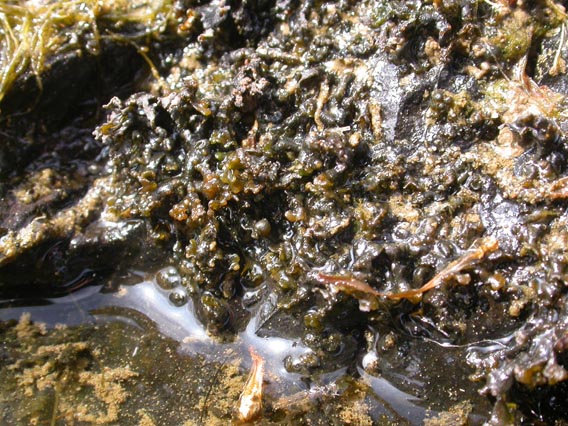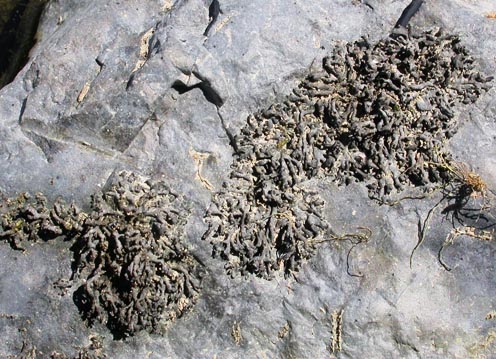Collema dichotomum
River Jelly Lichen
As its English name suggests this is one of the cyanobacteria-containing jelly lichens. In its one to two centimetre long, convex finger-like lobes (looking more like a tiny brown seaweed than a lichen) that fan out at the ends it resembles no Lempholemma species or any other Collema likely to be found on boulders and rocks in rivers or lakes where it is regularly exposed during dry periods. It has mostly been confused in the past with Leptogium plicatile. A vertical section through the thallus of a Collema shows it lacks a cellular cortex and so separates it from Leptogium. If this seems too much of a chore then the following table produced by Vince Giavarini in a report for the EA may help:
| Collema dichotomum | Leptogium plicatile |
|
|
 |
 |
| C. dichotomum - wet state. Photo: R G Woods | C. dichotomum - dry state. Photo: R G Woods |
Searching for it should ideally be at times of drought when it becomes exposed and as it dries out its lobes turn from green-brown to black. It is possible to search for it by feel under the surface of the water. With experience the firm Pontefract cake liquorice texture (rather than jelly as its name would suggest) readily identifies it. It lacks isidia. Apothecia are produced but are not a readily visible or common feature of this lichen.
- Read more about Collema dichotomum
- Log in to post comments
